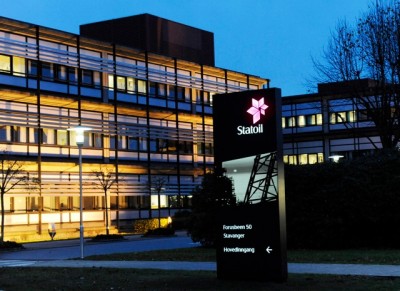Norway’s state-controlled oil company Statoil is suffering an abrupt reversal of fortunes, as last year’s dive in oil and gas prices cuts into its bottom line. The major decline in profits reported by the country’s biggest firm on Thursday came as no surprise, as its new boss tries to cut losses as well as costs.

Eldar Sætre unveiled his first batch of results since being officially named to take over for ex-CEO Helge Lund, and they were the worst in many years. Analysts suggested Sætre had to “clean up” after Lund’s unfortunate investment spree in North America in recent years, taking heavy write-downs that left Statoil with a deficit of NOK 35.4 billion. Lund’s investments in US shale gas, tar sands in Canada and offshore exploration in the Gulf of Mexico ave turned out to be unprofitable in an environment of low gas and oil prices.
Sætre also had to report first-quarter profits on operations that were only half what they were last year, when Lund already was initiating a cost-cutting program. Statoil’s adjusted earnings after tax landed at NOK 7 billion during the three months ending March 31, compared to NOK 15.8 billion during the same quarter last year. Operating revenues fell by 28 percent, operating results fell by half and pre-tax results fell to NOK 24.3 billion from NOK 52.2 billion last time.
(For Statoil’s own detailed account of its first quarter results, click here.)
Statoil’s problem has been its high cost level that soared during the oil boom of the past several years. The company needed high oil prices to cover its costs and maintain its profits, and even though oil prices sunk during the finance crisis in 2008, they quickly rose again. Now there aren’t many prospects for a return to triple-digit oil prices any time soon, and Statoil has to adapt to lower prices for both its oil and gas while operating from and in a high-cost country.
Dividend props up share price
Investors haven’t lost faith in the company, with its share price remarkably stable and even rising 3 percent by late morning on Thursday, after its poorest results in many years were released. The Norwegian state remains Statoil’s biggest shareholder, with a 67 percent stake, and analysts have told newspaper Dagens Næringsliv (DN) that other shareholders are probably sticking around because of Statoil’s promise to maintain its dividend. Statoil noted on Thursday that “free cash flows were positive” even after paying out dividends to shareholders.
Statoil’s price-earnings ratio, though, was recently branded by analyst Trond Omdal at Pareto as “gruesome” because it’s so high, with the share price 20 times higher than earnings last week. He thinks Statoil is still banking on oil prices rising: “Otherwise the company will have to delay or sell off projects. The company’s cost-cutting and reduced willingness to invest are already being felt along the Norwegian coast. Sooner or later, if the oil price remains low long enough, Statoil will have to cut its dividend.” Omdal has advised clients, though, to hold onto their shares for now.
Analyst Anne Gjøen was more skeptical, and has advised investors to reduce their holdings. She told DN that she expected Statoil’s international results tp worsen, also because costs abroad are higher in line with the stronger US dollar against the Norwegian krone.
‘Uncertainty’ and ‘caution’ ahead
Sætre and his colleagues acknowledged “uncertainty in the commodity markets” but insisted that “we continue to deliver strong underlying operational performance” and that “the underlying quality” of its assets remained unchanged.
Company officials were “taking a more cautious view,” but Sætre said Statoil continued “to see progress from our cost- and capital efficiency programs.” Field and modification costs on the Norwegian Continental Shelf (NCS) were lower as were international operating expenses. Statoil highlighted how it was moving forward with development of the huge Johan Sverdrup oil field, despite quarreling among its license partners, and that other projects were coming on line, like Valemon and Oseberg Delta 2.
“Our financial position remains robust,” Sætre declared, leading Statoil’s board to keep its dividend at NOK 1.80 per share, for now.
newsinenglish.no/Nina Berglund

